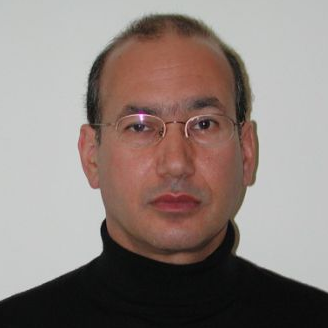Photosystem II Photochemistry in Biotic and Abiotic Stress
A special issue of Molecules (ISSN 1420-3049). This special issue belongs to the section "Photochemistry".
Deadline for manuscript submissions: closed (31 January 2023) | Viewed by 13960
Special Issue Editor
Interests: plant ecophysiology; biotic stress; abiotic stress; photosynthesis; antioxidative mechanisms; photoprotective mechanisms; mineral nutrition; ROS
Special Issues, Collections and Topics in MDPI journals
Special Issue Information
Dear Colleagues,
Photosynthesis is the process by which organisms convert absorbed solar energy into chemical energy via photosystem II (PSII) and photosystem I (PSI). In the light reactions of photosynthesis, the absorbed light as photons by the light-harvesting complexes (LHCs) is transferred to the reaction centers (RCs), where through charge separation, the electrons flow from photosystem II (PSII) through cytochrome b6f and diffusible electron carriers to photosystem I (PSI). PSII and PSI, which work coordinately for efficient electron transfer, are located in the photosynthetic membranes of chloroplasts, the thylakoids. Chloroplasts exhibit stacked and unstacked thylakoid membranes, designated as grana and stroma thylakoids, respectively. The two photosystems, PSI and PSII, are laterally and functionally separated mainly into the stroma (non-appressed) and grana (appressed) thylakoid membranes, respectively, that allow the regulation of the excitation energy distribution between the two photosystems. PSII is a multi-protein super-complex that initiates electron transport within the thylakoid membrane, catalyzing one of the most exciting reactions in nature, the light-driven oxidation of H2O and the production of O2. PSII eventually provides the electrons required for the conversion of inorganic molecules into the organic molecules and establishes itself as the “engine of life”. In the light reactions, the result is the generation of a proton gradient (ΔpH) for ATP synthesis and the reduction of NADP+ by the electrons transferred.
In light reactions of photosynthesis, reactive oxygen species (ROS), such as superoxide anion radical (O2• –), hydrogen peroxide (H2O2), and singlet oxygen (1O2) are continuously produced at basal levels that are incapable of causing damage, as they are being scavenged by different antioxidant mechanisms. Under most biotic or abiotic stresses the absorbed light energy exceeds what can be used and, thus, it can damage the photosynthetic apparatus, with PSII being particularly exposed to damage. If this excess excitation energy is not quenched by the photoprotective mechanism of non-photochemical quenching (NPQ), increased production of ROS occurs that can lead to oxidative stress. Thus, under biotic or abiotic stress, the oxidative stress that results from an imbalance between ROS production and scavenging by the antioxidant mechanisms can cause cellular damage that can lead to cell death. The response of plants to this imbalance before damage to their cellular structures is critical for maintaining high rates of photosynthesis and also for their survival. Nevertheless, these ROS signals not only provide cells with tools to monitor electron transport and, thus, prevent over-reduction or over-oxidation, but also produce redox regulatory networks that facilitate plants to sense and respond to biotic and abiotic stress conditions.
We encourage original research submissions, as well as review/mini-review articles, concerning basic aspects and future research directions in the field.
Prof. Dr. Michael Moustakas
Guest Editor
Manuscript Submission Information
Manuscripts should be submitted online at www.mdpi.com by registering and logging in to this website. Once you are registered, click here to go to the submission form. Manuscripts can be submitted until the deadline. All submissions that pass pre-check are peer-reviewed. Accepted papers will be published continuously in the journal (as soon as accepted) and will be listed together on the special issue website. Research articles, review articles as well as short communications are invited. For planned papers, a title and short abstract (about 100 words) can be sent to the Editorial Office for announcement on this website.
Submitted manuscripts should not have been published previously, nor be under consideration for publication elsewhere (except conference proceedings papers). All manuscripts are thoroughly refereed through a single-blind peer-review process. A guide for authors and other relevant information for submission of manuscripts is available on the Instructions for Authors page. Molecules is an international peer-reviewed open access semimonthly journal published by MDPI.
Please visit the Instructions for Authors page before submitting a manuscript. The Article Processing Charge (APC) for publication in this open access journal is 2700 CHF (Swiss Francs). Submitted papers should be well formatted and use good English. Authors may use MDPI's English editing service prior to publication or during author revisions.
Keywords
- Photosynthesis
- Light reactions
- Electron transport
- Chlorophyll fluorescence
- Excitation energy
- Light-harvesting complex
- Antioxidant mechanisms
- Thylakoids
- Reaction centers
- Stacked and un-stacked membranes
- Reactive oxygen species (ROS)
- ROS production and scavenging
- Superoxide anion radical
- Hydrogen peroxide
- Proton gradient (ΔpH)
- Singlet oxygen
- Oxidative stress
- Environmental stress
- Redox regulation






